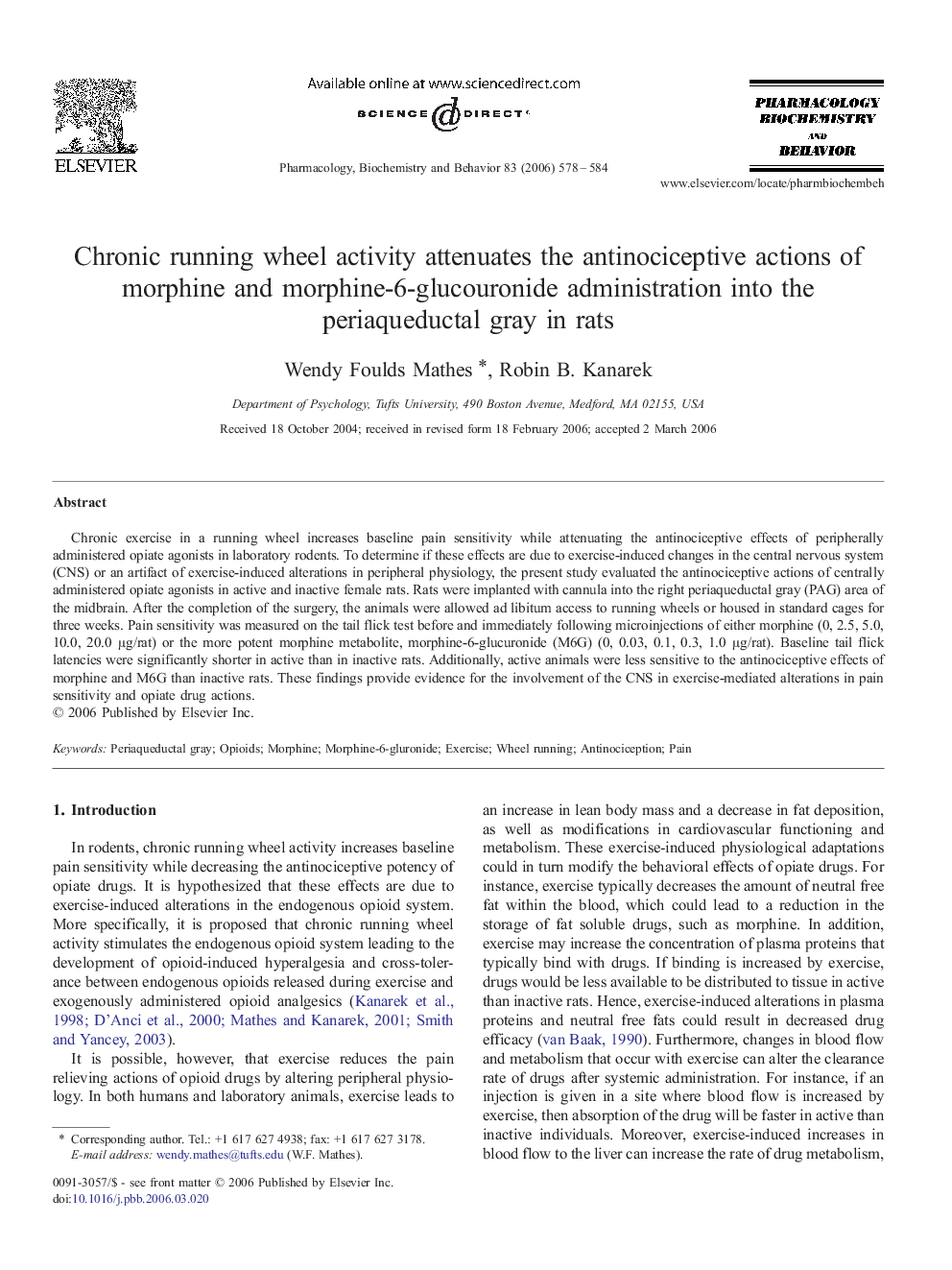| Article ID | Journal | Published Year | Pages | File Type |
|---|---|---|---|---|
| 2014553 | Pharmacology Biochemistry and Behavior | 2006 | 7 Pages |
Chronic exercise in a running wheel increases baseline pain sensitivity while attenuating the antinociceptive effects of peripherally administered opiate agonists in laboratory rodents. To determine if these effects are due to exercise-induced changes in the central nervous system (CNS) or an artifact of exercise-induced alterations in peripheral physiology, the present study evaluated the antinociceptive actions of centrally administered opiate agonists in active and inactive female rats. Rats were implanted with cannula into the right periaqueductal gray (PAG) area of the midbrain. After the completion of the surgery, the animals were allowed ad libitum access to running wheels or housed in standard cages for three weeks. Pain sensitivity was measured on the tail flick test before and immediately following microinjections of either morphine (0, 2.5, 5.0, 10.0, 20.0 μg/rat) or the more potent morphine metabolite, morphine-6-glucuronide (M6G) (0, 0.03, 0.1, 0.3, 1.0 μg/rat). Baseline tail flick latencies were significantly shorter in active than in inactive rats. Additionally, active animals were less sensitive to the antinociceptive effects of morphine and M6G than inactive rats. These findings provide evidence for the involvement of the CNS in exercise-mediated alterations in pain sensitivity and opiate drug actions.
